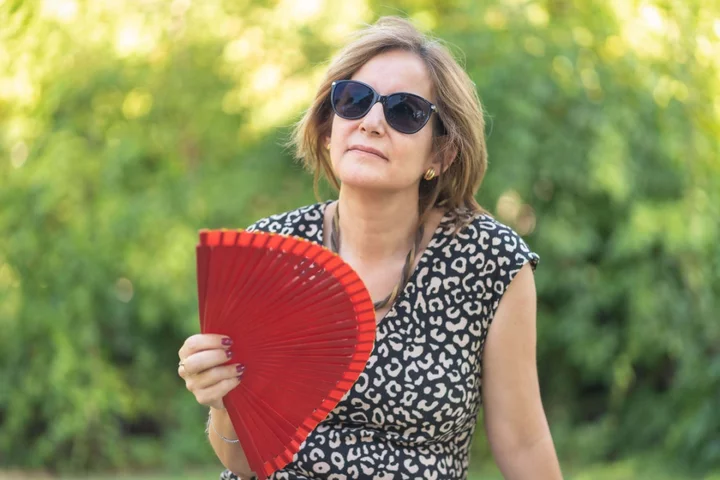
Struggling with menopause symptoms in the heat? An expert shares tips
Heatwaves can be uncomfortable at the best of times, but what if you’re already having hot flushes? Dr Naomi Potter, founder of Menopause Care and co-author of bestselling book, Menopausing, with Davina McCall, points out that eight in 10 people who go through menopause experience symptoms like hot flushes – a sudden surge of heat, often accompanied by redness and sweating. Night sweats and trouble sleeping are also common during perimenopause and menopause – not the sort of things you want to be dealing with when a heatwave hits. “The increasing temperatures can make hot flushes and night sweats worse, and make it harder to cool down when you do experience them,” says Potter, explaining that the lack of oestrogen associated with menopause affects the part of the brain that helps regulate body temperature. “If you’re already hot and sweaty, then having a night sweat or hot flush can just make everything worse and uncomfortable.” Here’s her advice for getting through the summer heatwaves… Travelling “Public transport can be awful at the best of times in the heat, especially when travelling on tubes, trains and buses where you’re cramped in, so if you experience a hot flush while travelling, it can be extremely unpleasant,” Potter says. “Try carrying water and a small fan, to give some comfort in these moments, if just for a short relief.” If you can, invest in a water bottle designed to keep liquids cold, so you’ll always have something cool to sip when you need to. Be drink savvy Speaking of drinks, Potter also suggests trying to limit alcohol, coffee and sugary beverages, especially if menopause symptoms are proving troublesome. Iced tea and water are ideal options. “During the summer, you’re more likely to be dehydrated, and alcohol, coffee and fizzy drinks worsen dehydration,” she explains. “So it’s worth bearing that in mind and staying hydrated with water.” Sleep Menopause might already be impacting your mood and energy levels, so sleepless nights can be a double whammy. “In the case of night sweats, you’ll often experience broken and interrupted sleep, which has a knock-on effect and impact on lifestyle and work the next day,” says Potter. “Create a cool sleeping environment by wearing light breathable bed clothes and have a spare by the bed in case you wake up sweaty, so you can change without having to properly wake up to find new clothes,” she suggests. Plus, a well-positioned bedroom fan will be your summer best friend. Dress light It goes without saying that clothing also affects temperature – so if hot flushes are bothering you, tweaking your wardrobe could certainly help. Potter suggests dressing in “lightweight, breathable fabrics” such as cotton or linen. Plus, a light pair of cycling shorts/long knickers under skirts and dresses can help massively with sweating and discomfort at this time of year. Get the right support Heatwave or no heatwave, menopause doesn’t have to mean suffering in silence and just soldiering on if symptoms are impacting you. “If somebody is having symptoms, then it is definitely worth seeing their GP because there’s lots that can be done,” says Potter. “And if you have a menopause-friendly workplace, it is definitely worth talking to [managers] because with recently headlines, many workplaces are much more supportive of the menopause. “I think it’s vital that conversations like this continue,” Potter adds. “Without speaking about experiences, then there is no way for people to realise that this is a normal life event, and there is help if it is required.” Storing HRT in the heat Finally, if you are taking hormone-replacement therapy (HRT), make sure it’s being stored correctly when temperatures soar. “Most HRT should be stored at room temperature. If this is the case with yours (it will say on the side of the packaging), do not refrigerate or freeze it. Instead, storing it in a cool dark place, away from direct light, should be fine,” says Potter. You will want to keep it away from excessive temperatures though – basically anywhere that can get particularly hot when it’s sunny, such as inside cars, on window ledges. “And aircraft holds,” Potter adds, “where temperatures are unknown and can rise rapidly.”
2023-06-14 18:48
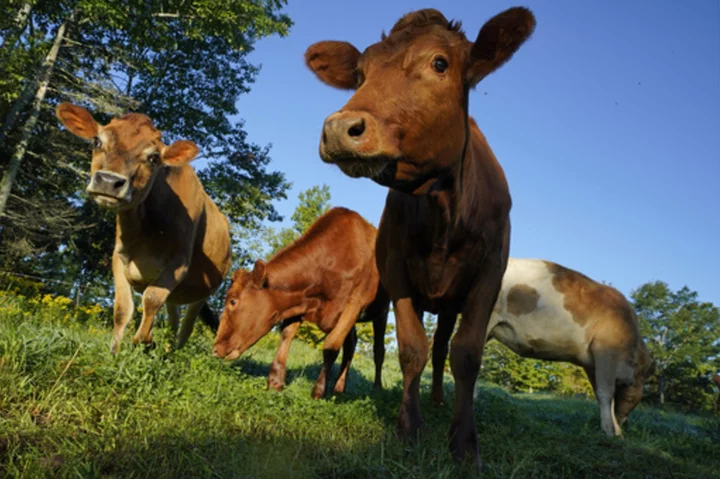
US beefs up campaign to ensure accurate animal welfare claims on meat, poultry packaging
The U.S. Department of Agriculture says it hopes to weed out false or misleading animal-welfare claims on meat and poultry packaging with new guidance and testing
2023-06-14 18:25
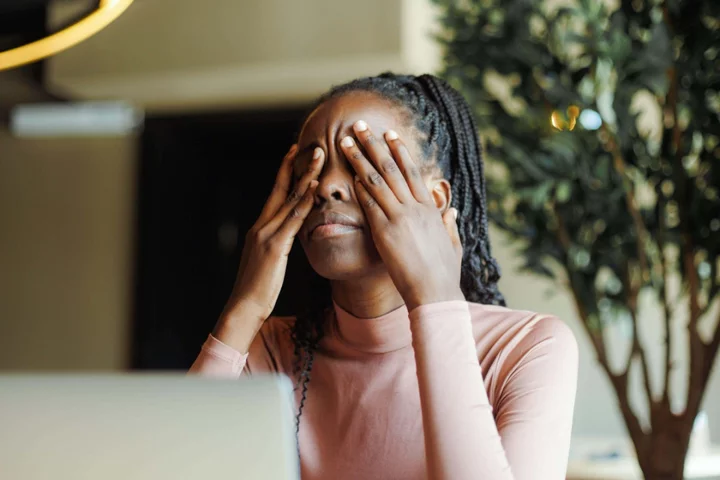
Men and women with migraine both have increased risk of stroke – study
Women and men who experience migraines have an increased risk of having the most common type of stroke, research has suggested. Additionally, women alone may carry a further risk of heart attack and haemorrhagic stroke (bleeding in or around the brain). People diagnosed with migraine are believed to have a higher risk of experiencing a heart attack or stroke before the age of 60. Migraine was associated with a similarly increased risk of ischemic stroke among young men and women Cecilia Hvitfeldt Fuglsang, Aarhus University Previous research had suggested the increased risk of ischemic stroke – when a blood clot blocks a blood vessel to the brain – mostly affects young women. However, it was unclear whether women with migraine also carry a higher risk of heart attack and haemorrhagic stroke compared to men. Cecilia Hvitfeldt Fuglsang, of Aarhus University, Denmark, and her team looked at Danish medical records collected from 1996 to 2018, from people aged 18 to 60. They identified men and women with a history of migraines and compared their risk of a heart attack and ischemic and haemorrhagic stroke before the age of 60 to the risks faced by people in the general population without migraine. Hvitfeldt Fuglsang said: “Migraine was associated with a similarly increased risk of ischemic stroke among young men and women. “However, migraine may be associated with an increased risk of myocardial infarction and haemorrhagic stroke only among women.” The findings suggest both men and women with migraine had a similarly increased risk of ischemic stroke. However, women with migraine may also carry a slightly higher risk of heart attack and haemorrhagic stroke, compared to men with migraine and the general population. Women are more greatly impacted by migraine, especially since the condition is predominantly diagnosed in women, the researchers suggest. The researchers point out that since they used prescription drug records to identify patients with migraine, they may have missed untreated people, which could have resulted in an underestimation of the contribution of migraine to these health problems. The findings are published in the Plos Medicine journal. Read More Charity boss speaks out over ‘traumatic’ encounter with royal aide Ukraine war’s heaviest fight rages in east - follow live Less than half of children ‘have received a meaningful financial education’ Harry Potter star Miriam Margolyes makes British Vogue cover debut aged 82 Toff: Drinking mindfully is a gift to yourself
2023-06-14 17:57

Less than half of children ‘have received a meaningful financial education’
Less than half (47%) of children and teenagers aged seven to 17 have received a meaningful financial education, according to a Government-backed body. The Money and Pensions Service (MaPS) estimates from its findings that around 5.4 million children across the UK do not have the money skills they will need in adulthood. Children living in social housing, rural areas and in lower income households were found to be less likely to have received a meaningful financial education. And children with parents or carers with mental health conditions tend to be less likely to have received a meaningful financial education than the UK average, the findings indicate. The measure of meaningful financial education is based on the percentages of young people who recall receiving financial education at school that they considered useful, and/or received regular money from parents or work, with parents setting rules about money and handing over responsibility for some spending decisions. Research was conducted for MaPS between late summer and autumn 2022 across the UK by Critical Research, among more than 4,700 children and young people aged seven to 17 and their parents or carers. The proportion of children and teenagers found to have received a meaningful financial education is similar to 2019, when the figure was 48%. The report said: “When interpreting these results, it is worth remembering the disruption to education and normal life caused by the Covid-19 pandemic potentially limited opportunities for children to receive a meaningful financial education at school and/or home over the last three years. According to the latest findings, a third (33%) of children recall learning about money in school and finding it useful, and nearly a quarter (24%) have received key elements of financial education at home. It is worth remembering the disruption to education and normal life caused by the Covid-19 pandemic Money and Pensions Service report Only 10% reported having both, suggesting that children and young people tend to receive meaningful financial education either at home or at school and not as “joined-up” financial education, the report said. Younger children aged seven to 11 continue to be less likely to have received a meaningful financial education than older children aged 16 to 17, according to the report. Children in Scotland are the most likely (52%) to have received a meaningful financial education, the report indicated, followed by those in Wales (51%), England (46%) and Northern Ireland (43%). Those in Wales (79%) are more likely than those living in the UK (71%)as a whole to receive regular money from parents/carers or work, according to the research. As part of its UK strategy for financial wellbeing, released in 2020, MaPS is aiming for two million more children aged five to 17 to receive a meaningful financial education by 2030. It is urging parents to talk to their children about money and combine it with everyday experiences, such as food shopping, budgeting and wages from a part-time job. Our experiences in childhood prepare us for adulthood and learning about money is no different Sarah Porretta, Money and Pensions Service To help with this, MaPS offers free resources such as “talk learn do“, an online tool that helps parents to start the conversation. The MaPS, which is sponsored by the Department for Work and Pensions (DWP) and funded by levies on the financial services industry and pension schemes, added that teachers, school leaders and governors should work together to deliver financial education in classrooms. It is also calling on financial services and funders such as charitable trusts to increase their investment in the delivery of financial education. Sarah Porretta, executive director at MaPS said: “These figures will alarm everyone in financial education because more than five million children could be going without. “Our experiences in childhood prepare us for adulthood and learning about money is no different. It becomes a part of daily life and our financial decisions can bring real benefits and profound consequences, so it’s crucial to learn from a young age. “The race is on to educate the nation’s children and everyone, from banks and building societies to foundations and financial institutions, has a big part to play. “Parents and schools can also make a huge difference by combining money skills with everyday experiences, both inside and outside the classroom.” Read More Charity boss speaks out over ‘traumatic’ encounter with royal aide Ukraine war’s heaviest fight rages in east - follow live Harry Potter star Miriam Margolyes makes British Vogue cover debut aged 82 Toff: Drinking mindfully is a gift to yourself Should you sleep naked? Heatwave myths debunked
2023-06-14 17:52
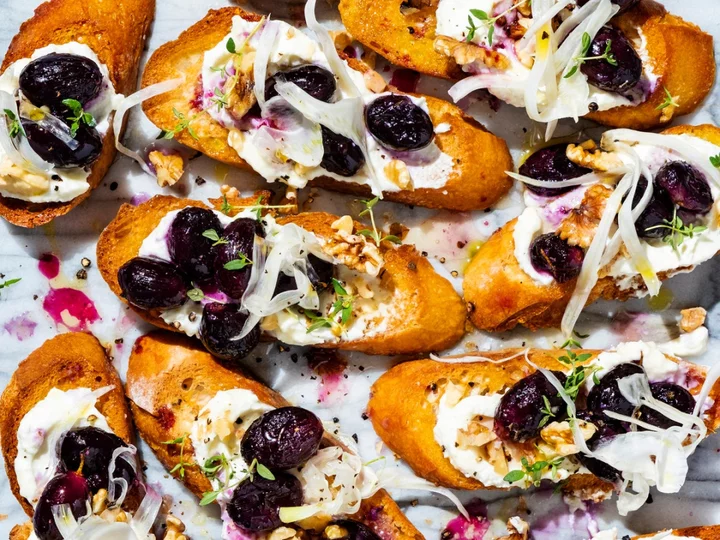
Roasted grape, honey and feta crostinis are perfect dinner party canapes
This creation is heavily inspired by one of my favourite signature bakes in the Bake Off tent,” says Crystelle Pereira, who was a runner-up on the show in 2021. “I had made a focaccia during Bread Week, with roasted grapes, sharp, salty feta, crunchy walnuts and fresh fennel. “It went down a treat, and so I’ve transferred all of the same flavours and textures into crispy crostini – little bites of sweet and salty deliciousness.” Roasted grape, honey and feta crostini Ingredients: For the infused oil: 50ml olive oil 2 garlic cloves, grated ½ tablespoon dried thyme For the crostini: 240g black seedless grapes (about 24 grapes) 200g feta 10 walnuts, skin on 1 small baguette 1½ tablespoons runny honey ¼ fresh fennel bulb, thinly sliced (optional) A bunch of fresh thymea pinch of fine sea salt and ground black pepper Method: 1. Preheat the oven to 180C fan/400F/gas mark 6. 2. First make the infused oil. Place the olive oil in a small saucepan with the garlic and thyme and heat very gently over a low heat for about 10 minutes, until the oil is sizzling and fragrant. Turn off the heat and set aside. 3. Arrange the grapes in a roasting tray and spoon over 3 teaspoons of the infused oil. Toss the grapes until they are coated, then place in the oven and roast for 20 minutes, until they are sizzling and the skins have shrivelled slightly. Allow to cool, then slice each grape in half lengthways. 4. Place the feta in a food processor with a splash of feta water (or a splash of milk if your feta does not have water), a good pinch of pepper and a tiny pinch of salt and blend until completely smooth. 5. Place the walnuts in a dry frying pan over a medium heat and toast for around 7 minutes until slightly browned and fragrant. Allow to cool slightly, then break into small pieces and set aside. 6. Slice the baguette diagonally into thin crostini slices (about 1.5cm thick) and drizzle a teaspoon of the infused oil over each slice. Place these on a tray and toast in the oven for 7–10 minutes until crispy and golden, or alternatively cook on a griddle pan over a high heat for 4 minutes, flipping halfway through. 7. To assemble, spread 1 heaped teaspoon of whipped feta over each crostini and drizzle with honey. Top with about 4 grape halves and a scatter of fennel, crushed walnuts and fresh thyme leaves, and serve straight away. Recipe from ‘Flavour Kitchen: Vibrant Recipes with Creative Twists’ by Crystelle Pereira (Kyle Books, £22). Read More BBQ salad recipes without a soggy lettuce leaf in sight Grace Dent’s quick and easy recipes that only require the microwave How to shop for and cook Japanese food at home like a pro Crystelle Pereira: ‘This is controversial but... French food isn’t that great’ Forest Side, review: Cumbrian produce elevated to Michelin-starred proportions Showstopping BBQ main dishes for a hot grill summer
2023-06-14 17:17

Toff: Drinking mindfully is a gift to yourself
When you think back to Made In Chelsea’s heyday, it seemed to be all champagne, kisses, debauchery and parties. But Georgia Toffolo, 2017 Queen of the Jungle and close pal of Stanley Johnson, says she often wasn’t drinking champagne at all. “We were always photographed with glasses of champagne in our hands, but mine was normally a non-alcoholic version,” the 28-year-old explains. “I don’t know whether people really know this.” At that time, the nation’s relationship with alcohol was in the spotlight, and how well we looked after our wellbeing became more important. Things began to change around her, says Toffolo. “People became more aware of their habits – both negative and positive. And as I was in my early 20s, I was able to ride that wave. “My attitude to wellbeing has changed hugely. I try to get balance and moderation, which is a constant battle, whether I am looking at how I eat, drink, work, or exercise. In my early 20s, it was so manic and I tried to work all the hours God sent, so the theme of my mid-20s has been trying to find moderation,” she explains. That moderation has become pertinent to her drinking habits. “I am a mindful drinker. I have been drinking since I was 18, but over the past three years, I have really tried to be more mindful.” She’s not the only one. According to new research by Harrogate Spring Water, 61% of adults are intending to try drinking in moderation in the coming months – a campaign Toffolo is supporting by debuting a new 0% summer cocktail, The Royal Raspberry Spritz, at Royal Ascot on Tuesday, June 20, at The Harrogate Spring Water Mindful Drinking Bar. A lot of people, Toffolo says, “are interspersing alcoholic drinks with non-alcoholic drinks, which is exactly what I do. “Ascot is like my Christmas. I go every day of every year but it can be a really long week,” she explains. “People go racing for so many different reasons, but you want to be on flying form. I drink loads and loads of water, feel super hydrated and feel great the next day. I spruce it up with a bit of basil or elderflower.” And because she sticks to mindful drinking, hangovers are a thing of the past, says Toffolo. “It doesn’t feel like it’s a chore, it doesn’t feel like I am losing out on anything, it is a gift to yourself. My mindset and my relationship with alcohol is so much healthier.” Read More Charity boss speaks out over ‘traumatic’ encounter with royal aide Ukraine war’s heaviest fight rages in east - follow live Should you sleep naked? Heatwave myths debunked 7 hay fever hacks to ease your symptoms this summer The pests you really don’t want invading your garden and how to deter them
2023-06-14 16:22
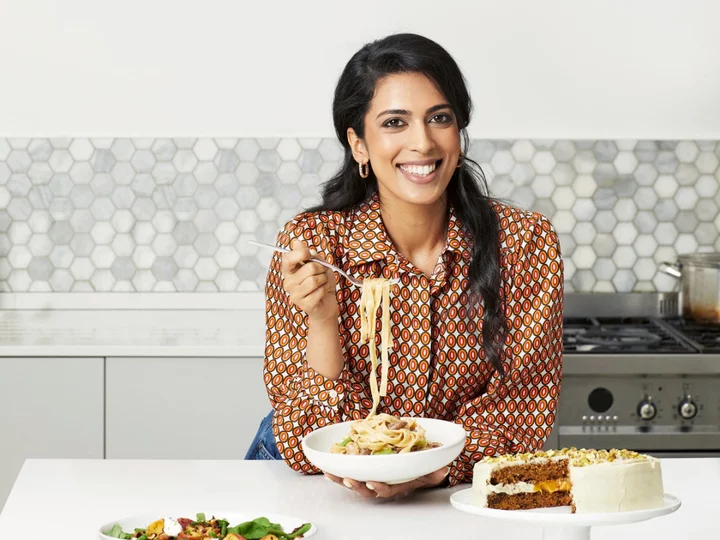
Crystelle Pereira: ‘This is controversial but... French food isn’t that great’
Crystelle Pereira can’t believe how time has flown in the two years since she competed in the Great British Bake Off. “Since I hit send on that application, it’s literally felt like I have just hit, like, times 10 in speed of life!” she tells me, wide-eyed, on a video call from the home in North London she shares with her parents and one of her two sisters. The 28-year-old – who finished runner-up to Giuseppe Dell’Anno in the 2021 season – was working in a fast-paced finance job when she took part. Landing a book deal shortly after the series aired (seven publishers were vying for her signature), she waited seven months before handing in her notice to pursue a cookery career. “I wouldn’t say I’m a pessimist, but I’m a realist,” the London-born cook says. “It’s very easy to quit your job and think, ‘Oh my gosh, I’m famous, this is great’. But I thought, ‘I don’t want to quit my job blindly and chase my dreams’. I need to think, ‘Is this viable? Can I actually get work?'” How did she decide to finally take the plunge? “It got to a point where I was like, I’m just working two full-time jobs – I’ve got no more annual leave, I’m about to burn out. “And also I need to grab this opportunity with both hands and just do it [otherwise] I think I’ll always regret it.” She hasn’t looked back since: “Honestly, it’s the best decision I’ve made. [Cooking] is literally my full-time job, it’s no longer a side hobby that I rush to do after I finish a long day of work. “It means I’ve got more time to really put into my job, I’m free to go on trips to Italy to look at Parmesan,” (an excursion she’s embarking on soon) “and obviously doing my book took up so much time.” Flavour Kitchen, her debut cookbook, is a colourful ode to Pereira’s Portuguese-Goan heritage (her parents met in Mumbai before moving to the UK). Split into two halves, the savoury section features brunch bites, curries, pasta, noodles, salads and more, all bursting with international flavours, such as Goan chilli chicken fry, kimcheese toasty, and honey and chipotle baked camembert. The sweet half is all about cakes, cookies, pies and other treats with a twist. Bake Off fans will remember the pistachio, orange and cardamom carrot cake Pereira created for her final Signature Challenge. “Goa is in the south of India, and it was colonised by the Portuguese,” Pereira says, which is why Goan food is so different to the rest of Indian cuisine. Vindaloo curry, for example, has its roots in Europe: “The Portuguese had this dish called carne de vinha d’alhos, a pork and wine dish. The Goans took that and swapped Portuguese wine with Goan vinegar and that became vindaloo.” Many of the savoury recipes in Flavour Kitchen feature a liberal splash of the tangy liquid. “Our food is very vinegar-based, which sounds a bit off-putting but it just works because it’s all balanced really well,” Pereira says. “If something’s got lots of vinegar, then it’s offset with something sweet like jaggery, which is an unrefined sugar, or coconut, because coconuts are in abundance in Goa.” Given the choice, the adventurous cook would much rather tuck into fiery fish curry, egg fried rice with Korean gochujang chilli paste or noodles with “about 10 cloves of garlic” than a plate of pretentious haute cuisine. “I will be honest, this is really controversial…” she begins, pausing before admitting: “I’m not that big on French food.” Conceding that Parisian pastries are unbeatable, she continues: “I’m just more into pan-Asian and Mediterranean food – I just think the flavours are a bit more vibrant. “Like you think about South Korea, you think about gochujang; in Greece you think about fresh mint, coriander, lemon, halloumi; Mexico, you’ve got chipotle; go to the Middle East, you’ve got harissa, ras el hanout [spice mix], all these flavours.” The cook credits her mum and dad’s cooking for helping her develop a taste for the exotic, and her late grandad – to whom she dedicates the book – with overseeing her success. “He sadly he passed away before any of this took off, but I genuinely believe in life after death – I genuinely believe he’s been a big part in guiding me through all of this. “I think he just knew l was going to end up in food. Funnily enough he used to call me MasterChef – we used to watch a lot of cooking shows together.” Having amassed 190,000 Instagram followers and cooked live on Good Morning America, The Today Show and ITV’s Lorraine, Pereira is well on her way to celebrity chef status. There have been many a pinch-me moment during her first year as a fully-fledged foodie, none more surreal than when she met King Charles (at that point still a Prince) at a Queen’s Jubilee lunch event last summer. “[Charles and Camilla] turned up and I thought, ‘I’m sure they won’t come over to speak to us,” Pereira recalls. “All of a sudden he’s walked over and said, ‘Oh, do you mind if I sit there? Because there was a seat next to me.” What did the pair talk about? “I think I was just word-vomiting! I said ‘Do you like baked goods?’ and ‘Do you bake?’ “The general consensus was he doesn’t bake, but he does like to eat. He likes cakes, he likes Italian cuisine. And then I was just talking to him about my style of baking and stuff. We had a merry old chat!” As well as finding herself starstruck by royals, Pereira has had to get used to being recognised by fans: “It literally happened the day after the first episode, which was wild. “I was going to work, I was on the train platform – I had a mask on my face, which is even funnier. This girl comes up to me and goes, ‘Oh my gosh, are you Crystelle from Bake Off?” Though she was recently “so embarassed” to be spotted at the end of spin class while “red and sweaty”, being asked for selfies is a small price to pay for being able to live out her dream. “I will never complain,” she says. “Like, no one’s there like throwing things at me! If I bump into anyone on the train or on holiday or whatever everyone is genuinely so lovely, so it’s actually just really nice to be honest.” ‘Flavour Kitchen: Vibrant Recipes with Creative Twists’ by Crystelle Pereira (Kyle Books, £22).
2023-06-14 13:59
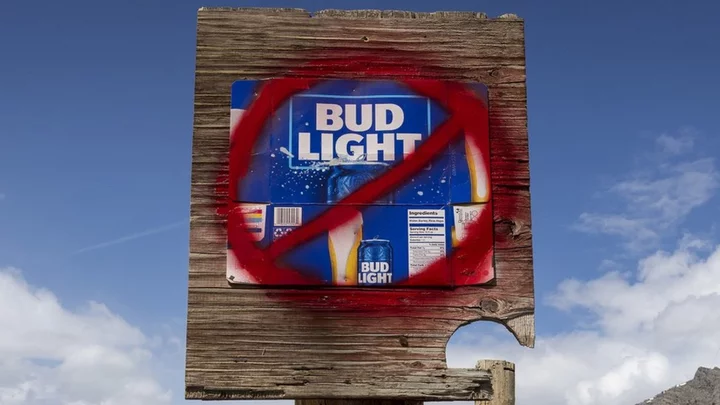
Dylan Mulvaney: Bud Light loses top spot in US after boycott
Some drinkers boycotted the brand after the firm partnered with transgender influencer Dylan Mulvaney.
2023-06-14 13:57
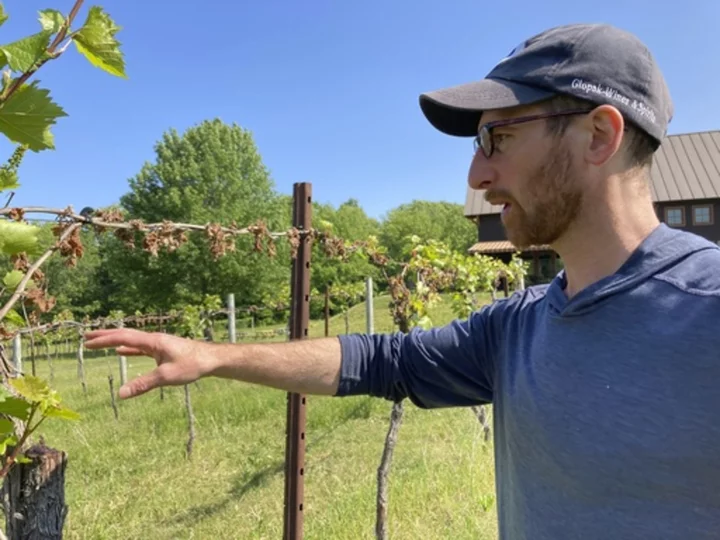
Federal assistance sought for northeastern vineyards, orchards hit by late frost
Vineyards and apple orchards across the Northeast are still gauging damage from a late-season frost in May that wiped out a third to most of the crop for some growers who say it's the worst frost damage they've ever seen
2023-06-14 13:23

As conditions for Syrians worsen, aid organizations struggle to catch the world's attention again
Aid agencies will struggle to draw the world’s attention back to Syria at an annual donor conference hosted by the European Union in Brussels for humanitarian aid to Syrians
2023-06-14 13:19

Bali considers banning mountain climbing following spate of bad tourist behavior
Bali's governor has announced a ban on tourist activities on its mountains with "immediate effect," in a bid to preserve its sacred peaks following a rise in violations by misbehaving tourists.
2023-06-14 09:58
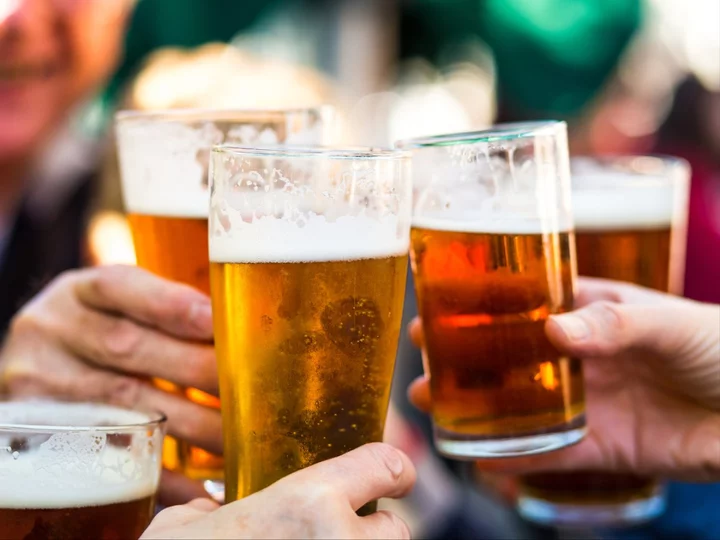
Americans are drinking alcohol at levels not seen since the Civil War, report says
As if 2023 wasn’t hard enough, Americans are now drinking as much alcohol as they did during the Civil War days. A new report from the National Institute on Alcohol Abuse and Alcoholism (NIAAA) has found that the average American drinks about the same amount of alcohol as people did in 1860. In 2021, Americans consumed 2.51 gallons of ethanol – the alcohol found in wine, beer, and spirits – compared to 2.53 gallons at the brink of the Civil War. That amount, which doesn’t include water or other ingredients found in alcoholic beverages, marks a 60 per cent increase in liquor consumption compared to the mid-1990s. Americans have also changed their taste for alcohol. The amount of beer consumed has dropped nearly 20 per cent since 1995, while wine has steadily become America’s drink of choice. Now, 50 per cent more Americans are drinking wine than they did in the mid-1990s. This isn’t the only time the United States has seen staggering levels of alcohol consumption. In 1934, following the repeal of the Prohibition Act, Americans were drinking one gallon of ethanol per person. At the end of World War II in 1945, Americans reached 2.3 gallons. This, compared to 2.8 gallons in 1980, when alcohol consumption was at its highest. The rise in alcohol consumption may also have to do with a key demographic: women. In March, it was revealed that women in the US are out-drinking men for the first time in history. Dr George Koob, director of the NIAAA, recently told the Washington Examiner that binge drinking among college students are to blame. “In 2021, there has been an uptick, particularly among women. Now it turns out on college campuses women are actually binge drinking more than men, for the first time in history,” he told the conservative media outlet. The Covid-19 pandemic also saw a dramatic shift in alcohol consumption, as most states declared liquor stores were considered “essential businesses”. In 2020, the first year of the pandemic, sales of alcohol increased by 2.9 per cent, the biggest annual increase in more than 50 years, according to the NIAAA. Now, with college campuses back in session and local bars open again, Koob attributed the rising trend of women binge drinking to the “alcohol deprivation effect” – in which people “rebound in drinking” after a period of abstaining from alcohol. “A standard drink is 1.5 ounces of vodka, 12 ounces of beer, or five ounces of wine,” he said. “When you go past a standard drink, you really are getting to the point where alcohol ultimately becomes a toxin. You can easily overdose.” The Centers for Disease Control and Prevention (CDC) says that it’s safe for women to drink no more than one standard alcoholic beverage a day, and no more than two for men. However, binge drinking usually corresponds to five or more drinks on a single occasion for men, while four or more drinks on a single occasion for women. Read More Moderate alcohol consumption may lower stress, reduce heart disease risk, study finds Man dies after eating raw oysters from Missouri seafood stand Hip surgery policies based on weight ‘worsen health inequality’, study warns TikToker cooks rack of ribs in hotel bathroom using only items from his room BBQ salad recipes without a soggy lettuce leaf in sight How to shop for and cook Japanese food at home like a pro
2023-06-14 08:27
